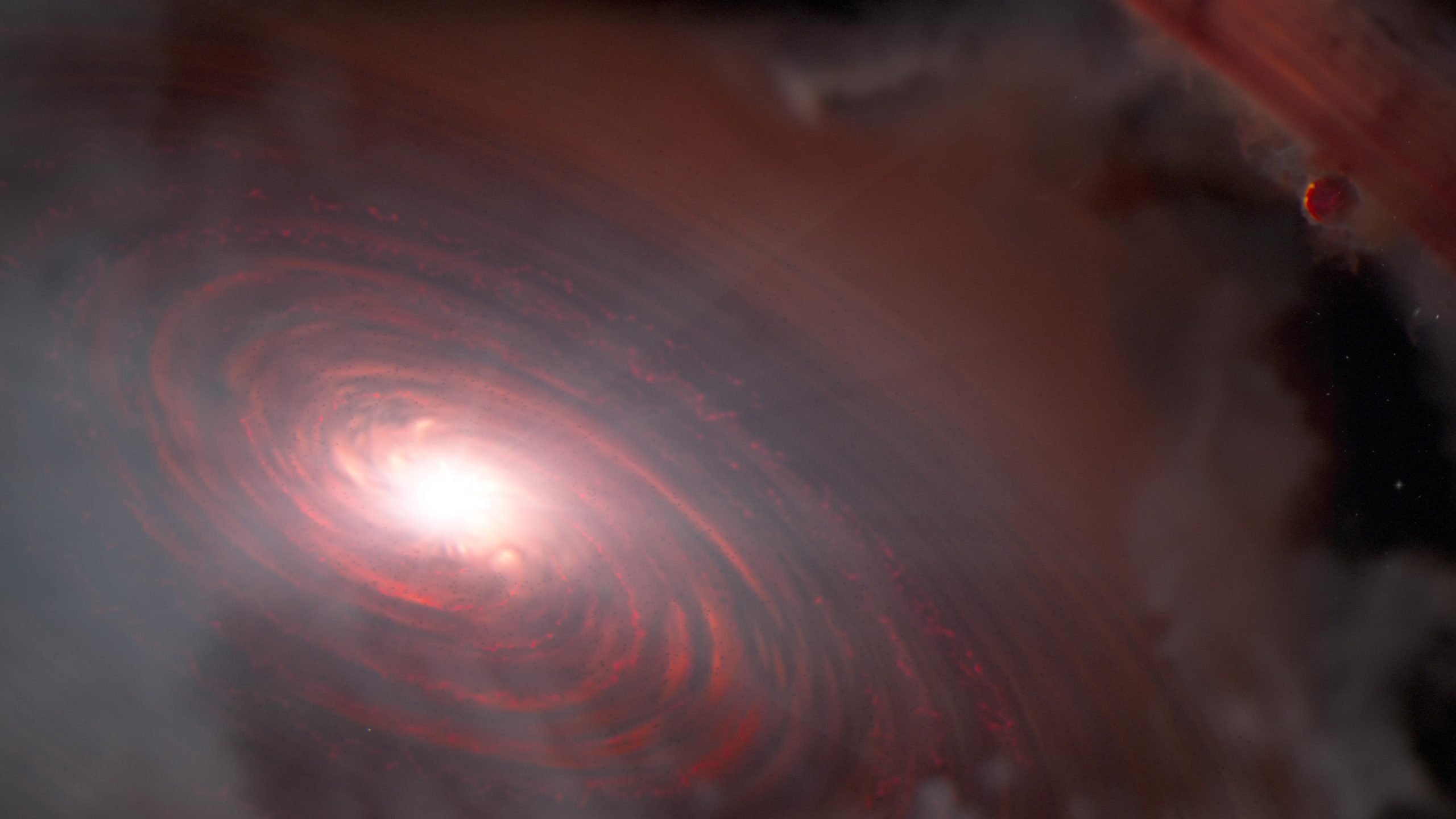
Simulación numérica de la fusión de estrellas de neutrones para formar un agujero negro cuyos discos de acreción interactúan para producir ondas electromagnéticas. Crédito: L. Rezolla (AEI) & M. Koppitz (AEI & Zuse-Institut Berlin)
Los científicos han avanzado en el descubrimiento de cómo usar las ondas en el espacio-tiempo, conocidas como ondas gravitacionales volver al principio de lo que sabemos. Los investigadores dicen que pueden comprender mejor el estado del universo poco después una gran explosión aprender cómo estas ondas en el tejido del espacio fluyen a través del gas entre planetas y galaxias.
«No podemos ver el universo primitivo directamente, pero tal vez podamos verlo indirectamente si observamos cómo[{» attribute=»»>gravitational waves from that time have affected matter and radiation that we can observe today,” said Deepen Garg, lead author of a paper reporting the results in the Journal of Cosmology and Astroparticle Physics. Garg is a graduate student in the Princeton Program in Plasma Physics, which is based at the U.S. Department of Energy’s (DOE) Princeton Plasma Physics Laboratory (PPPL).
Garg and his advisor Ilya Dodin, who is affiliated with both Princeton University and PPPL, adapted this technique from their research into fusion energy, the process powering the sun and stars that scientists are developing to create electricity on Earth without emitting greenhouse gases or producing long-lived radioactive waste. Fusion scientists calculate how electromagnetic waves move through plasma, the soup of electrons and atomic nuclei that fuels fusion facilities known as tokamaks and stellarators.
It turns out that this process resembles the movement of gravitational waves through matter. “We basically put plasma wave machinery to work on a gravitational wave problem,” Garg said.
Gravitational waves, first predicted by Albert Einstein in 1916 as a consequence of his theory of relativity, are disturbances in space-time caused by the movement of very dense objects. They travel at the speed of light and were first detected in 2015 by the Laser Interferometer Gravitational Wave Observatory (LIGO) through detectors in Washington State and Louisiana.
Garg and Dodin created formulas that could theoretically lead gravitational waves to reveal hidden properties about celestial bodies, like stars that are many light years away. As the waves flow through matter, they create light whose characteristics depend on the matter’s density.
A physicist could analyze that light and discover properties of a star millions of light years away. This technique could also lead to discoveries about the smashing together of neutron stars and black holes, ultra-dense remnants of star deaths. They could even potentially reveal information about what was happening during the Big Bang and the early moments of our universe.
The research began without any sense of how important it might become. “I thought this would be a small, six-month project for a graduate student that would involve solving something simple,” Dodin said. “But once we started digging deeper into the topic, we realized that very little was understood about the problem and we could do some very basic theory work here.”
The scientists now plan to use the technique to analyze data in the near future. “We have some formulas now, but getting meaningful results will take more work,” Garg said.
Reference: “Gravitational wave modes in matter” by Deepen Garg and I.Y. Dodin, 10 August 2022, Journal of Cosmology and Astroparticle Physics.
DOI: 10.1088/1475-7516/2022/08/017
This research was supported by the U.S. National Science Foundation through Princeton University.

Aficionado a los viajes. Lector exasperantemente humilde. Especialista en internet incurable
 Impulsse.la Complete News World
Impulsse.la Complete News World
